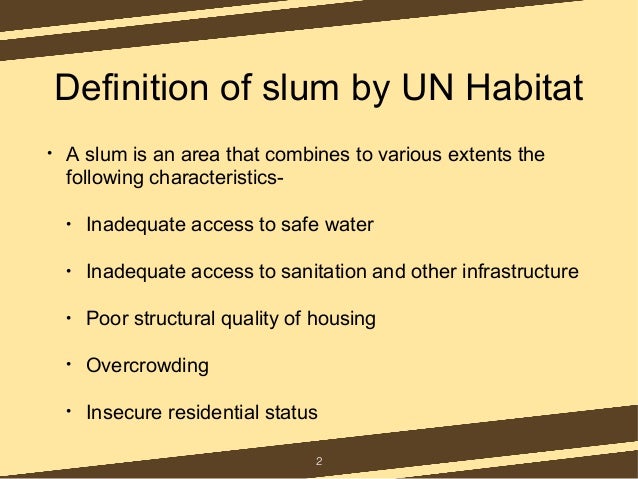COVID-19 & lessons for India’s urban poor policy
Relevance: Sociology: Industrialization and Urbanisation in India:Growth of urban settlements in India. Slums and deprivation in urban areas. & G.S paper II: Welfare schemes for vulnerable sections of the population by the Centre and States and the performance of these schemes; mechanisms, laws, institutions and Bodies constituted for the protection and betterment of these vulnerable sections.
• Issues relating to development and management of Social Sector/Services relating to Health, Education, Human Resources. • Issues relating to poverty and hunger. & G.S paper I: Society and social issues: developmental issues, urbanization, their problems and their remedies.
Context
The government should learn from this pandemic and create a robust, equitable and sustainable infrastructure that should be inclusive for all levels of society.
Normal is not normal anymore. There is a new normal which the world is adapting to after the rapid spread of the novel coronavirus (SARS-COV-2) across the globe.
Analysis
The novel coronavirus disease (COVID-19) pandemic has changed everything. It has forced humanity to flex and evolve, both in real-time and in the long-term. Physical- and social-distancing are buzzwords and an integral part of daily life.
In India, unprecedented urban sprawling already impedes intensification of complex, urban issues including but not limited to land, water and sanitation. Almost 65 million people or 17 per cent of the urban population live in informal settlements.
These two factors, combined with the fact that India has a population density of 200,000 people per square kilometre in slums like Dharavi in Mumbai, mean that social distancing is almost impossible in the country.
The urban slum population is more prone to deficiency of basic amenities like safe drinking water, sanitation, housing and health care services.
According to National Family Health Survey-4 (NFHS-4, 2015-16) 4.6 per cent, 3.4 per cent and 8.4 per cent of the urban, rural and urban slum populations respectively were using unimproved sanitation facilities. The open defecation rate reported in urban slums was 63.1 per cent.
The public health system in India has witnessed tremendous progress since the world’s first cholera pandemic in Kolkata in 1847 and the burden of mortalities during the 1918 flu pandemic.
But due to the complex and fairly unique Indian phenomenon of neighbourhoods where the urban poor and middle class live together, India is still in a vulnerable stage of defence against any communicable disease, especially one which turns into an epidemic or pandemic.
In April 2020, the National Centre for Disease Control under the Union Ministry of Health and Family Welfare issued an advisory for urban slums and similar deprived population zones that primarily talked about containment plans in case any positive case was detected in these areas.
According to the advisory, local influencers are expected to ensure dos and don’ts including social distancing and common sanitation measures.
The dynamics of health management in an urban poor population are very different from those of wealthier sections of society and a mere advisory may not be an effective tool to combat the biological and social strains of COVID-19 among this social stratum.
Slums in India majorly consist of migrant workers who are engaged is short- and long-term employment in the unorganised economy which is very sporadic in nature, with constant job insecurity.

The unprecedented lockdown in the country to prevent the spread of the virus may be well-intentioned but not adequate for this section of the population.
While Dharavi is famous as Asia’s largest slum, there are many other similar or smaller zones spread across the urban landscape of India where media outreach is minimal, and it is unclear whether the virus has made its way to those slums.
Á lockdown may be an effective approach to stop the spread of virus. However, the impact of COVID-19 on informal workers, domestic workers, street-vendors etc who are often ‘invisible’ during the normal days, will not just be restricted to them, but will have multidimensional risks to the country as a whole.
Economic impact
Migrant workers, who are anchors of a slum population, started returning to their native places due to fear, anxiety and hunger. Most of them were daily wagers and did not maintain cash liquidity for this kind of uncertain situation.
According to the latest India 2020 publication, the unorganised sector in India accounts for 97 per cent of the workforce and the majority of them are inter / intra state migrants.
Reverse migration of these workers will adversely affect sectors, including but not limited, to real estate, manufacturing, milling, textile, travel and tourism, e-commerce delivery, private security and facilities management.
Once the curve of COVID-19 flattens, the reverse migration will have a notable economic impact on both, the states that the migrant workforce belongs to and the ones to which they go to.
States like Uttar Pradesh, Bihar, Odisha and West Bengal, which are the native places of most migrants, may witness a sudden flood of people, creating an unusual burden on the economic and social infrastructure, whereas states such as Delhi, Haryana, Punjab, Gujarat, Karnataka, Maharashtra and Tamil Nadu will witness a sudden ebbtide of workforce, leading to reduction in production capacity.
Social impact
A random telephonic survey conducted by Afridi et al in Delhi indicates the social stigma faced by low income families living in urban slums. Eighty five per cent of respondents stated they had lost their primary source of income due to lockdown while half (53 per cent) of those did not receive full salary for the month of March 2020.
Undoubtably, there is support from government in terms of providing free food /ration and direct infusion of cash into bank accounts, but these provisional measures are grossly inadequate to ensure social security.
The uncertainty to resume the normalcy of life invites anxiety, stress and fundamental concerns about financial well-being.
Though there are less-reported instances, but based on psychological theories, a high degree of possibility exists to support the prediction of increased incidences of domestic violence, crimes against women, theft, dacoity and robbery etc, due to emotional and financial stress.
This pandemic raises a pressing need of policy level reform to ensure holistic inclusiveness and preparedness of the country to develop a more responsive framework to mitigate urban inequality during any similar outbreaks in future.
Health impact
Healthcare institutions, the government and the World Health Organization have been delivering lessons on handwashing and social distancing since the start of the pandemic.
However, in most slums of the country, where a shared tap is the only source of water, it is unclear as to how this segment of the population will adhere to the preventive guidelines. Poor-resourced settings are most vulnerable to any communicable disease.
In the absence of a curated strategy to control the pandemic among the urban poor, India cannot boast of flattening the curve. Primary healthcare centres, that are at the bottom of the healthcare system pyramid, are already in short-supply or facing infrastructural deficits.
They are not adequate to shoulder the burden of a pandemic. Apart from those who are active COVID-19 patients, the virus creates a passive challenge for those who are suffering from other critical ailments such as cardio-vascular, renal etc.
Most importantly, it impacts the scheduled care of expecting mothers and children whose routine check-ups, immunisation and treatments are disrupted. Malnutrition among children below five years from the urban poor population is still a persistent problem in India.
Lack of income due to the lockdown may result in further dependency on food from government or charitable organizations and if this is not taken seriously, this may result in a bigger outbreak of multiple diseases caused due to nutritional deficiency.
Considering the epidemiology of COVID 19-transmission through physical contact, droplets, contaminated surfaces and aerosols, the government should create community-specific detection, containment and treatment plans. The standard procedure of testing, containment and treatment followed in a well-resourced society cannot work in an urban poor settlement.
Conclusion
The government should ensure access to food, shelter, healthcare and basic needs of the urban poor population as an interim relief.
In addition, it should learn from this pandemic and focus on social determinants of healthcare by creating a robust, equitable and sustainable infrastructure that should be inclusive for all levels of society and ensure strong grassroots level partnership with communities.
The government should create a communication strategy that ensures preventive measures such as basic sanitation practices and hygiene get blended into day-to-day culture rather being promoted as a temporary situational treatment.
The current situation demands for a social innovation framework where every citizen is an actor of change and having certain roles and responsibilities towards creating a safer, healthier nation.

For more such notes, Articles, News & Views Join our Telegram Channel.
Click the link below to see the details about the UPSC –Civils courses offered by Triumph IAS. https://triumphias.com/pages-all-courses.php

